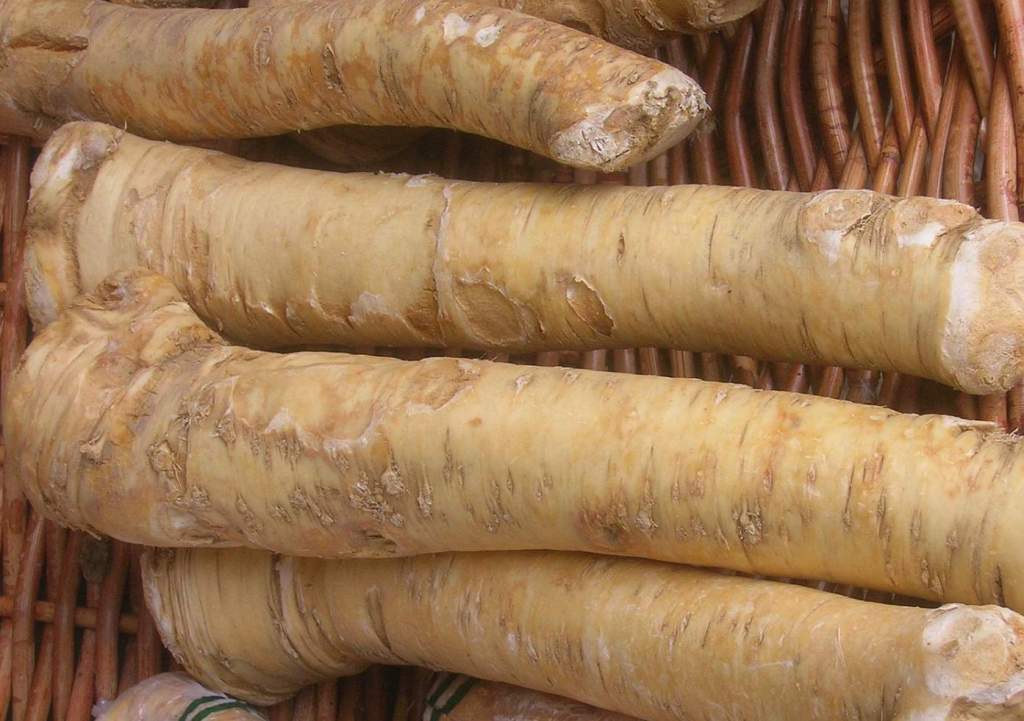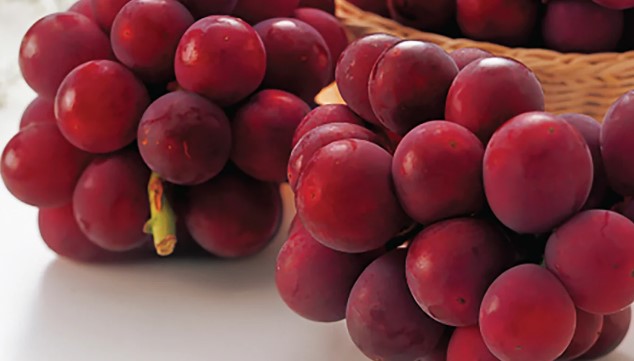Family: The horseradish (Armoracia rusticana) is an everlasting plant of the mustard family member Brassicaceae.
Description: Horseradish is prized for its large fleshy roots, which are ground and used to dress meats. It has a strong, sharp, pungent flavor and is usually diluted with vinegar. The plant makes a rosette of long leaves, two to three inches wide and over a foot long. It has a flower stalk two to three feet tall, with small white flowers. Native to the Mediterranean region, it has become a weed in many parts of the world. It is not a particularly suitable plant for the casual gardener, as it spreads and is difficult to remove. The commercial crop is grown in the Mississippi Valley, especially in Missouri. Some are grown on the Eastern Seaboard.
Soil and Climatic Requirements: The plants are hardy in all parts of the United States, but the highest quality can be found in the northern states. It does best in loam and heavy sandy loam soils. Lower-lying soils well supplied with organic matter and moisture, if properly limed, are ideal for the crop. Heavy manure applications are desirable to grow the crop. Many growers depend on organic material as a source of nitrogen and supply potash and phosphoric acid as needed by the plants.
Cultural Directions: The horseradish seed does not mature well; therefore, the crop is usually grown by setting in the fine roots which are stripped from the large fleshy roots as they are dug for harvest. When the fine roots are removed from the large fleshy roots, the end close to the fleshy root is cut square, while the tip is cut at a slant.
These root cuttings are packed in bunches and stored in moist sand in the cellar. The cuttings are set two inches apart in rows 3 feet apart. The rows should have 8 inches of furrows. The cuttings, usually about 6 or 7 inches long, are set in at a slant, with the square upper and 3 or 4 inches below the surface.
After the plants are up and have grown 3 or 4 inches, the roots are carefully lifted, so that the cutting tip is not disturbed. The fine fibrous roots are stripped from the upper 4 inches. The roots and tops are then laid back in place and covered with soil. This procedure produces a straight, compact root best suited to grinders.
Branchy roots are difficult to grind. Horseradish should be cultivated to control creeds. Either in the late fall or the following early spring, the roots are dug trimmed, and sold. They are also ground up and placed in quart cans until used. Roots may also be stored in root cellars or in a cool cellar under the house. People earn hefty revenue from a half-acre by growing the crop as a sideline.
Insects and Diseases: Horseradish does not have serious pests. The crop should be rotated from place to place so that it does not grow on the same ground more often than every four years. White rust may cause some trouble, but if no plants are allowed to become wild and the garden is thoroughly cleaned, there should be no difficulty.
General Recommendations: Gardeners assume that because horseradish plants thrive wild, they need not bother to set up a few plants for their own use. However, volunteer plants usually grow in grass and the roots are stringy and very bitter; if you want horseradish to taste like that, you won’t like it. If it is made from well-grown roots, it is sweet and palatable despite being hot. For this reason, it should be dug and replanted each year.
Read More – Celery – Helps to Calm the Nerves Naturally







